
Miniature Full Range Open Baffle for the Desktop
Designer:
Craig J Coley
Project Category:
Bookshelf Speakers
Project Level:
Beginner
Project Time:
1-8 Hours
Project Cost:
$100 – $500
Project Description:
This project is called the Coley OB-4 Desktop Open Baffle speaker. It is a miniature full range open baffle speaker with a frequency response of 50 Hz to 20 KHz. The circuitry presents a high impedance to the amplifier at high frequency, preventing high frequency instability with simple amplifier designs.
Design Goals:
This project began with two goals, (1) determine the minimum possible size for a full range open baffle, and (2) design a set of speakers suitable for desktop use at the office. Considering that small, low distortion Class D bluetooth amplifiers were readily available, it was decided to accept 20-22dB of efficiency loss to make the speaker full range. This efficiency sacrifice may sound unacceptably large but with a 30W low distortion amplifier costing only $30.00 or so, there is still plenty of volume available to achieve a high fidelity sound.
Driver Selection:
A Mark Audio CHN-70, Tang Band W4-1320, and Tang Band W4-1720 were evaluated for this project. I was surprised to learn that my own measurements of the Tang Band W4-1720 woofer showed it to be a better full range speaker than either the Mark CHN-70 or Tang Band W4-1320. The W4-1720, even though advertised as a woofer, had a flatter high frequency response than the manufacturers data sheet implied, as well as better Xmax and a lower free air resonance.
Enclosure Design:
The baffle for the OB-4 is a simple flat board made from 1 x 6 cedar with a 3 inch foot made from 1 x 4 cedar. Cedar was chosen for its low cost, pleasant grain, and lack of formaldehyde that can trigger allergic reactions.
Enclosure Assembly:
Because the OB-4 is a simple open baffle, construction is quick and easy. The baffle and foot were first rip cut and then sanded smooth using an orbital sander. All edges were treated with a router and round-over bit. One edge of the 3” foot was cut at 10 degrees with a band saw and two pocket holes were drilled for attachment to the main baffle. The driver hole was cut with a 4” hole saw and the hole edges rounded with the router. Because this was solid wood, all holes were predrilled to avoid splitting.
Once assembled, the finish used was a Minwax water based walnut stain that is fast drying, low odor and low allergy potential.
Crossover Design:
The crossover is a simple LR shelving circuit used to provide a conjugate match to the natural bass rolloff of the driver. Once initial measurements were taken of the driver itself, the driver characteristics were entered in SPICE and the circuit modeled to achieve the desired conjugate characteristics of the circuitry for compensation. Approximately 22dB of efficiency loss was required to flatten the driver response from 50 Hz to 20 KHz.
Tips & Tricks:
The baffle isn’t critical in either size or material and can easily be made from any convenient material such as MDF. The 30mH inductor also isn’t critical and can be made from a wide variety of solid and air core inductors as long as the rated saturation current is at least 1.0 amp.
Conclusion:
The Coley OB-4 performs extraordinarily well as a desktop speaker system, bringing high fidelity sound to the office at low cost.
It may be difficult for some builders to get past the low efficiency of the OB-4 but this shouldn’t be a deciding factor. The overall sound is excellent and flat in frequency response, betraying both the speaker size and the low efficiency. I have tried these speakers with a wide range of amplifiers from my $1100.00+ Coley 215SE high end SET amplifier to low cost Class D amplifiers cost only $30.00, all with excellent results.
About the Designer:
This project was designed and built by Craig J. Coley of Burleson, TX. I work as an electrical designer and am listed as inventor on 8 US patents in the field of avionics. Contact me at craigjcoley@gmail.com.
Project Parts List:
|
Part # |
Description |
Qty |
|
264-872 |
Tang Band W4-1720 4″ Underhung Midbass Driver |
1 |
|
015-100 |
100 Ohm 5W Resistor Wire Wound 5% Tolerance |
1 |

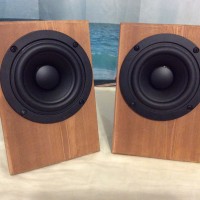
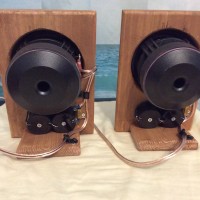
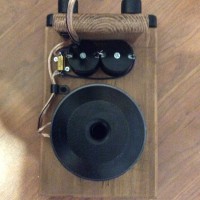
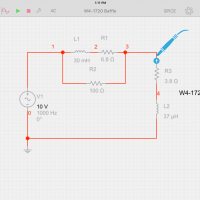
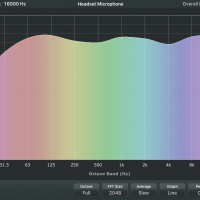
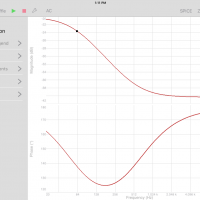
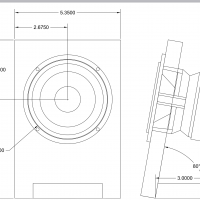
How would these fare as small bookshelf speakers for a den or office? Thinking of something small for my mantle… It’s about 10 feet listening distance. Thanks!
They should work because that is similar to my desk at work. Remember they are open baffle and you should control how the wave from the rear of the speaker reaches the listener. Simply placing them at an angle to the wall is often enough to cause the back-wave to reflect to the side. Also remember they aren’t going to blow you out of the room because of the compensation used to achieve the bass extension. The inductors I used are a pair of J.W. Millier 1140-153K-RC connected in series on each speaker. These are pretty economical inductors and available from companies like Mouser. Overall, I think you’ll like the sound.
Thanks for the quick reply! I’d be powering these with an older NAD 705 60w integrated amp. Think that’ll be sufficient? Also, they would be reflecting off of a brick wall, would that do anything weird?
I think the NAD would be excellent because it is a superb amplifier and has enough power to compensate for the inefficiency. Brick behind the speakers should be fine As long as you angle the sepakers at a 20-30 degree angle so the back wave reflects to each side. I would also recommend not to follow the 10 degree vertical tilt in my drawing since these will be on a mantle across the room. If you had the room, the speakers that would blow you away are the 12″ coaxial point source open baffles I published a few weeks ago.
I believe your filter’s xfer fn can basically be duplicated by just using a 10 ohm series resistor and a 0.34mH series coil (DCR about 0.3 ohms); and the (more) commonly avail. 0.35mH coil (w/the 10n series resistance) will still dupe the fn below 10kHz, w/only a 1/4dB change (depression) @ 16k.
You’re basically (mostly) providing a +6dB “lift” at 60Hz, compared to the range above 200Hz.
The total bass boost required is more than 20dB at 50Hz with these small drivers and baffle. The circuit as you described would not accomplish this.
What value of inductors would you use for 8 ohm drivers. Carl P.
bit of a necro post, but what changes would be needed to use these with a Cambridge AXA25 or NAD D 3020 v1 hybrid?
and would any suitably sized full range speaker work, like the latest MarkAudio options (any in particular better suited than others from their line up?) or Jordan Eikona v2, etc?